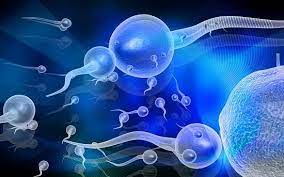Sometimes gelatinous lumps are observed in the sperm that is released during ejaculation. This can be concerning, but if it is random and not associated with other accompanying symptoms, it should not usually be interpreted as a warning sign.
Lumpy semen should be considered normal, for example in conditions of low ejaculation frequency and dehydration . Factors such as age, diet and level of physical activity also affect sperm count, consistency and color of ejaculate . However, in some cases, lumps in semen are a manifestation of inflammatory processes, hormonal imbalance or other pathological conditions that can be identified during a visit to the urologist at Bogolyuby MC and indicate the need for targeted treatment.
Lumps in semen - what are they?
Sperm initially has a thick and “coagulated” consistency, so during ejaculation it appears compact and viscous due to the enzymes it contains. They play an important role in increasing the chances of fertilization as they help the ejaculate to be “captured” by the cervical mucus. By making sperm viscous, enzymes slow down the rate of flow from the vagina. Proteases and seminal plasmin may contribute to the formation of gelatinous lumps. Subsequently, approximately half an hour after ejaculation, the sperm tends to liquefy.
Clots in semen can be easily detected by simple observation. The man notices that the ejaculation has become more dense. And ejaculation itself feels different, with less shock, which sometimes leads to irritation during intercourse due to excessive stretching of the urethra during the ejaculatory reflex.
When is sperm normal?
Sperm is a translucent or whitish secretion with a viscous consistency that comes out of the urethra during sexual arousal, due to the effect of stimulation of the penis, immediately before ejaculation. On average, 2–5 ml of sperm are released per ejaculation.
Essentially, ejaculate is a mixture of sperm and fluid that has subjective characteristics in terms of density, smell, taste and consistency. Therefore, many men have naturally thick sperm, while others have thinner sperm. Due to the fructose it contains, it may taste sweet, but this depends on many factors, including diet, exercise and temperature.
Why do lumps appear in semen?
With age, sperm is produced in smaller volumes and may contain gelatinous lumps. Semen feels thicker than usual and lumpy if you have a low ejaculation frequency or when you are holding back your ejaculation. In such cases there is nothing to worry about, unless there are other abnormal symptoms, it is most likely not related to any specific disorder or condition.
In case of doubt and to exclude any unforeseen circumstances, it makes sense to take a spermogram , as well as an ultrasound scan of the prostate.
The most common pathological causes of lumps in semen are inflammation of the seminal vesicles or prostate gland, as well as infections of the genital or urinary tract, and low testosterone levels. When the appearance of clots in semen is combined with discharge from the urethra and soreness of the epididymis, a sexually transmitted disease can be suspected.
When to worry?
The situation cannot be ignored if the consistency of the semen has changed and is accompanied by symptoms such as: pain during urination; pain during ejaculation; discharge from the penis; blood in urine. Some causes, such as infections, can be treated with proper treatment, so seek medical help immediately if you notice the above symptoms.
















